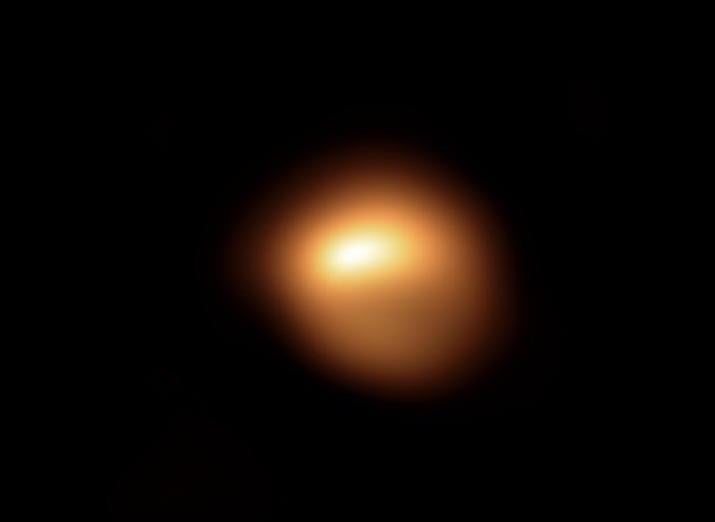Nasa's Hubble Space Telescope discovers reason behind Betelgeuse's unusual dimming

Nasa claims to have found the reason behind the star Betelgeuse's unusual dimming.
But work with the Hubble Space Telescope found that the behaviour seemed to result from a stellar "sneeze" that sent a huge amount of hot material into space, blocking the starlight.
Betelgeuse is a relatively old, red supergiant star that has swelled up because of nuclear fusion in its core. It is so big that if it took the place of our Sun, its surface would stretch all the way past the orbit of Jupiter.
It usually appears quite bright in our sky, and is one of the most visible stars from Earth. But from October 2019 the extreme dimming could be seen even with the naked eye, and its brightness dropped by more than a factor of three.
Astronomers were unable to account for the unusual behaviour. Before it was explained, it appeared to stop, and the star returned to its original brightness in April this year, further adding to the mystery.
But by looking at historical data from the Hubble Space Telescope, beginning in January last year, astronomers were able to construct a timeline of what led up to the dimming. Observations showed that material was being pushed through the star's atmosphere, just before the dimming became visible.
That led researchers to conclude that the expulsion was the cause for the otherwise unexplained behaviour. Other observations though ultra-violet light confirmed that the star appeared to be behaving normally, even while it was becoming dim, further justifying the theory.
But scientists are still unable to account for the beginning of the outburst or why it may have happened. Researchers hope to study it further to better understand the processes that could be happening around the star.
Nasa's groundbreaking decade of space exploration: In pictures
Show all 10“With Hubble, we see the material as it left the star’s visible surface and moved out through the atmosphere, before the dust formed that caused the star to appear to dim,” said Andrea Dupree, associate director of the Center for Astrophysics, Harvard & Smithsonian, who led the new observations. “We could see the effect of a dense, hot region in the southeast part of the star moving outward.
“This material was two to four times more luminous than the star’s normal brightness,” she continued. “And then, about a month later, the south part of Betelgeuse dimmed conspicuously as the star grew fainter. We think it is possible that a dark cloud resulted from the outflow that Hubble detected. Only Hubble gives us this evidence that led up to the dimming.”
The research is published today in The Astrophysical Journal.
Subscribe to Independent Premium to bookmark this article
Want to bookmark your favourite articles and stories to read or reference later? Start your Independent Premium subscription today.

Join our commenting forum
Join thought-provoking conversations, follow other Independent readers and see their replies